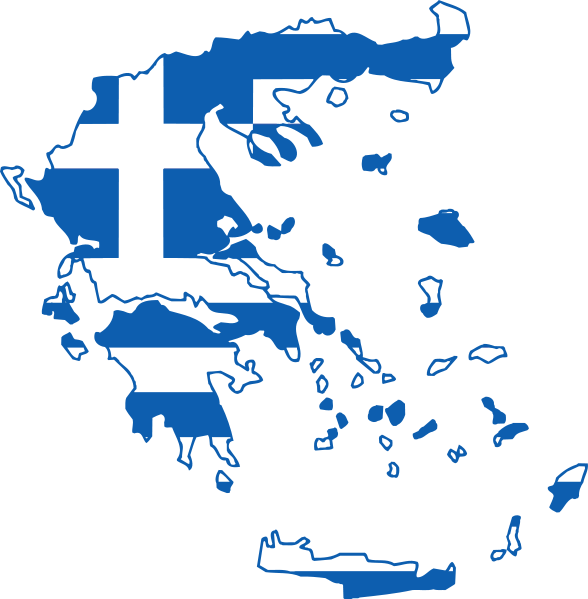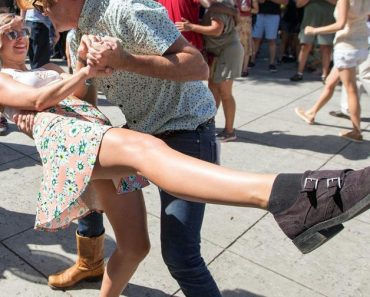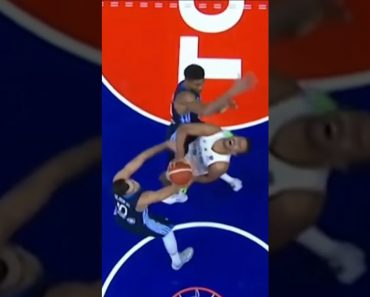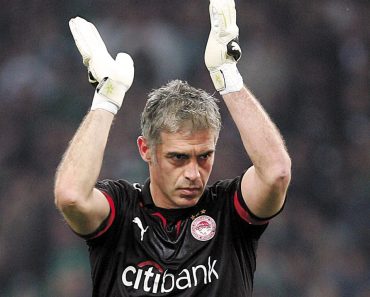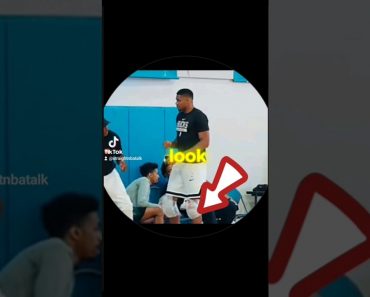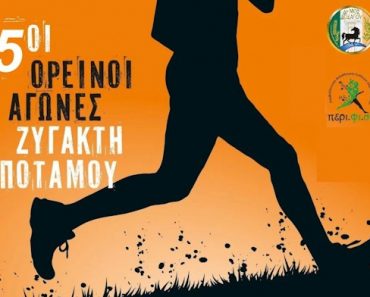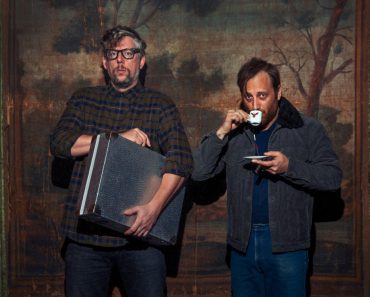Few people remember that Tasos Mitropoulos was born in the central Greece city of Volos on August 23, 1957. Most fans do remember the passion with which he played for Olympiacos, thus mistakenly thinking he is a Piraeus native. Yet Mitropoulos was not only born in Volos, he also grew up in the northwest Athens district of Nea Filadelfia after a short passage in Egaleo, further to the southwest, after where his parents settled there for a while.
Mitropoulos got to know Piraeus as a player for Ethnikos in 1976, at the age of 21. He was acquired by the Piraeus side to play as center forward, replacing the noted Uruguayan forward Roberto Calcaterra. He began his career with Aris Petroupolis, another small club in west Athens. Ethnikos at the time paid a tidy sum of 400,000 drachmas for Mitropoulos and later sold him to Olympiacos in 1981 for a hefty 19 million drachmas.
Whatever jersey he wore, his heart “beat” for Olympiacos – he showed it with every move on the field, even with his last foul
‘All the good ones fit’
His transfer was one of the most expensive in Greek football at the time, but it seemed a bit unexpected. The tall and strong Mitropoulos played as a center forward, while the same position on Olympiacos’ roster was covered by star forward Nikos Anastopoulos, a top scorer himself who was fast, short and an excellent dribbler. President Stavros Daifas, who acquired the tall striker at the time, simply told reporters that “all the good ones fit” and that the secret of the pair’s co-existence in the offense would be to become good friends off the field. Daifas’ Olympiacos with Mitropoulos would go on to win four championships between 1980 and 1984, at the advent of professional football in Greece. Daifas also proved to be a ‘prophet’ of sorts. Not only did ‘Anasto’ and “Mitro” form an excellent attacking duo, they also became best friends off the field, despite their totally different characters: Anastopoulos was talkative and mischievous, Mitropoulos was more reserved and a bit explosive.
Those who knew the two players back then claim that their friendship started when Mitropoulos changed his role on the field and played essentially as an attacking midfielder, a position then usually denoted by the number “10” on a player’s jersey, i.e. directly behind the most advanced striker.
Mitropoulos, in fact, moved around throughout the field, falling back at times to play in the center of the defense or as a central midfielder, recalling his days with Aris Petroupoli. While playing behind Anastopoulos on the field the formidable Mitropoulos dished out many assists to the former, as he had the ability to easily find him on the pitch and pass to him as the fast forward was running towards the opposing team’s penalty box.
A handful of Anastopoulos’ impressive “scissor-kick” goals came after Mitropoulos passed him the ball with a header, such as a goal against PAOK Thessaloniki at the Karaiskakis Stadium. Of course, that didn’t mean Mitropoulos didn’t score himself. In 270 games he played for Olympiacos from 1981 to 1992 he recorded 55 goals, celebrating in a characteristic manner, as if he were throwing a lasso.
His 55 goals were a great achievement because this tall and strong forward didn’t take penalty kicks. He left those to Anastopoulos, his buddy off the field, a favorite subject of sports columns at the time. One memorable instance came in 1984, when the duo failed to show up at the team’s summer training because of disagreements with then president Daifas.

Mitropoulos, right, celebrates a goal for Olympiacos during a game with PAOK Thessaloniki in 1983 (2-0) with other star players at the time, Nikos Vamvakoulas (left), Anastopoulos (second left), and Takis Lemonis.
Present in hard times, too
Mitropoulos’ leadership role, possibly even more so than his numerous goals, was the reason why he became popular with Olympiacos’ fans. He was present not only in the triumphs but also during very difficult seasons. His dynamic character caused him to step forward at every instance, one of the reasons for his nickname of “Rambo”.
If someone were to make a highlight film of Mitropoulos’ great moments, they would include a scene at the Apollon Kalamaria field in Thessaloniki in October 1987. Olympiacos’ management was in disarray and the team was also performing poorly. It was losing to Apollon Kalamaria 1-0 and was winless for six games. Mitropoulos scored an equalizer and when he saw the assistant referee begin to raise his flag to disallow the goal for an offensive foul, he literally pushed him back to the halfway line and confirm the goal.
Another highlight was a strong tackle made on standout defensive back Stratos Apostolakis, who had left Olympiacos for Panathinaikos at the end of the previous season, when the latter returned to Karaiskakis as an opponent in a Derby.
It was only in the 3rd minute of the game that “Rambo” literally lifted him into the air with a tackle, something that fans had essentially … expected. Mitropoulos was known as a “physical” and bruising player during his decades of pro play. His paid for this style, though, by missing 51 games due to yellow and red cards.
Nothing appeared out-of-place when Mitropoulos left Olympiacos, despite his love for the team and at a time he was its captain, given that he was 35 years old in 1992, an age when most pro players have essentially retired from top-flight play. Olympiacos at the time was coached by Ukrainian great Oleg Blokhin, while the No. 10 jersey was worn by another top Greek midfielder, Vassilis Karapialis.
Greek football’s “Rambo” could be a lot of things, but a substitute player was not one of them.
Anastopoulos suggested they both head to Ionikos Piraeus together, but well-known former player and coach Dušan Bajević, who always valued him as a rival, asked him to sign for AEK Athens.
He went on to win two championships with the Yellow-and-Black Club. After brief stints with Apollon Athens and Iraklis Thessaloniki, he arrived at the northern Greece team of Veria, where he was reunited with another Ukrainian legend, Oleh Protasov, and Giotis Tsalouchidis, with whom he played at Olympiacos.
Nearing the age of 40, Mitropoulos scored a goal on Dec. 16, 1996, with Veria against his beloved Olympiacos that ended the Piraeus’ side unbeaten streak, with Bajević now coaching the Reds.
At Veria he also set a significant personal record, scoring a goal in April 1996 against AEK Athens that rendered him as the oldest player to score in a Greek pro football game — at 39 years, seven months and 29 days old. That record was broken only this past year by former Olympiacos star Mathieu Valbuena, who scored while playing for Panachaiki, based in the western port city of Patras.
In the many stops he took after leaving Olympiacos, there is also an almost inexplicable stint with Panathinaikos, where he was a player for only a few months. He went to Olympiacos’ arch-rivals because of his friendship with his orthopaedic surgeon, Argyris Mitsos, and played in one game with the Greens, with many of the Panathinaikos fans booing him at every contact with the ball he made.
One explanation is that Mitropoulos took the decision to wear the Greens’ jersey because he possibly wanted to show that he feared nothing.
Years later as a now retired player with a significant career, he agreed to work as a commentator on the Athens-based Open television channel, owned by PAOK Thesssaloniki major shareholder Ivan Savvidis. The development coincided with a period of heightened friction between Olympiacos and PAOK, with Mitropoulos’ bold personality again cited for his decision, even though several of his friends advised him not to take up the position. He left the channel after only a few months.
That was classic Mitropoulos, however, meaning that he neither listens to nor pays much attention to the opinions of others. His brief stint with that television channel wasn’t as easily forgiven by Olympiacos fans as was his very brief passing with Panathinaikos.
In the end, “Rambo” was lucky enough to finish his career at the age of 41 with Olympiacos. On December 10, 1997 he came on as a substitute in an Olympiacos game against Rosenborg in a freezing Athens Olympic Stadium. In a brief appearance he earned a foul that Predrag Đorđević converted into a goal to tie the game at 1-1.
There was applause was for the scorer, but the ovation was for Tasos.
Mitropoulos continued his involvement with Olympiacos even after the end of his coaching career. For years he was the team’s “unofficial” general manager, but also an assistant to trainers such as Bajević, Takis Lemonis, Giannis Matzourakis and Alberto Bigon, having a huge part in titles the team won.
“We used to see him enter the Leoforos Alexandras Stadium and we used to say that this guy is capable of emptying the field by himself and chase away the fans,” a veteran Panathinaikos player would say years later about his rival.
For years he was the team’s “unofficial” general manager, but also an assistant to trainers such as Bajević, Takis Lemonis and others, having a huge part in titles the team won.
A celebrity status
Mitropoulos was also a celebrity, as for years he was the companion of Greek film star Elena Nathanael. Their every public appearance caused heads to turn. A few years after Nathanael passed away prematurely at the age of 61, he married former model and TV actress Nena Chronopoulou. He’s served as a Piraeus municipal councilor and as a candidate for the New Democracy (ND) party, due to his personal relationship with former ND president and prime minister Antonis Samaras.
Mitropoulos recorded 77 caps with the national team and was on the Greek side’s roster for the World Cup in the United States in 1994. With Olympiacos he won four championships and two Cups as a player, and just as many as an assistant coach – always on the front line!
